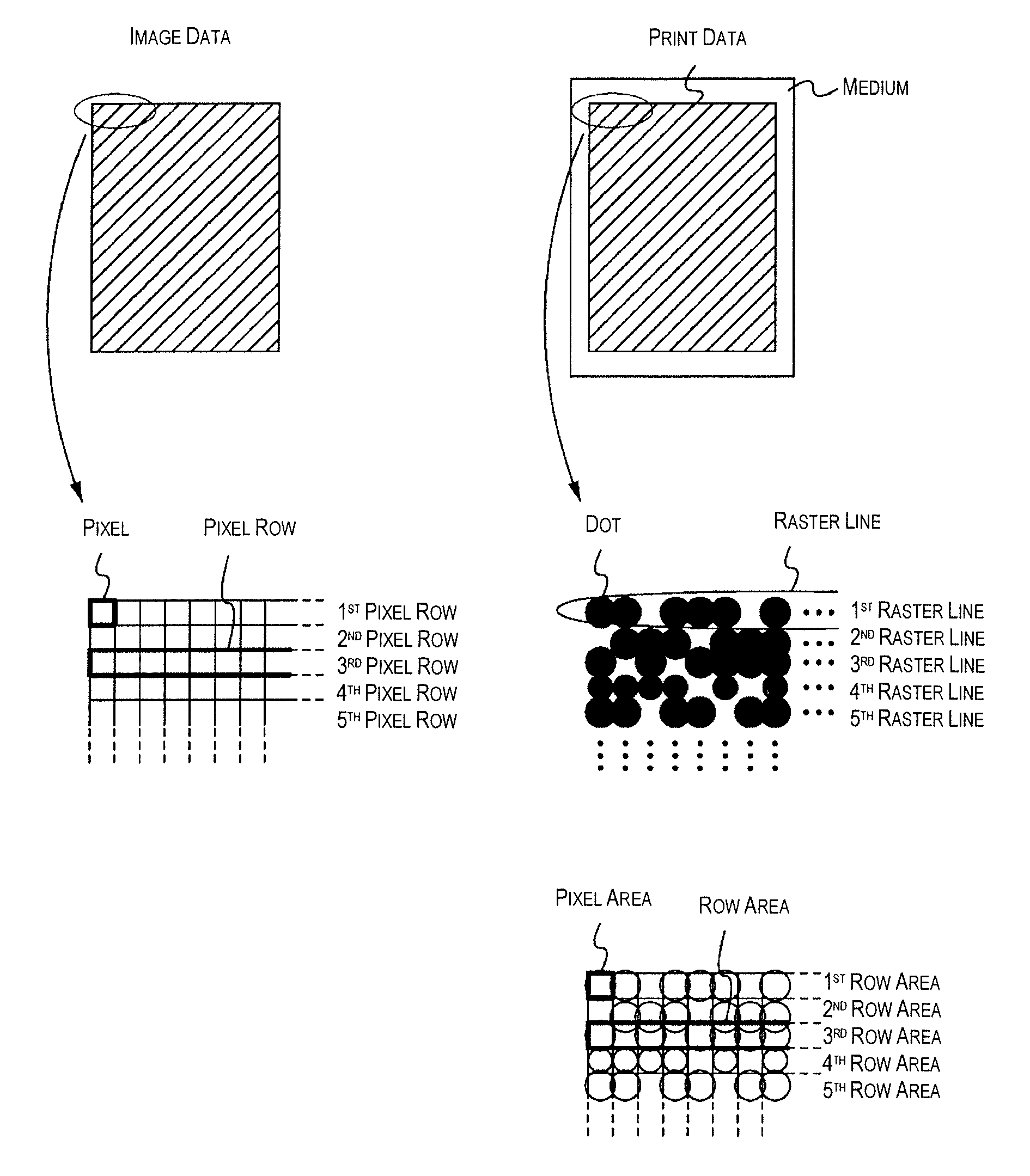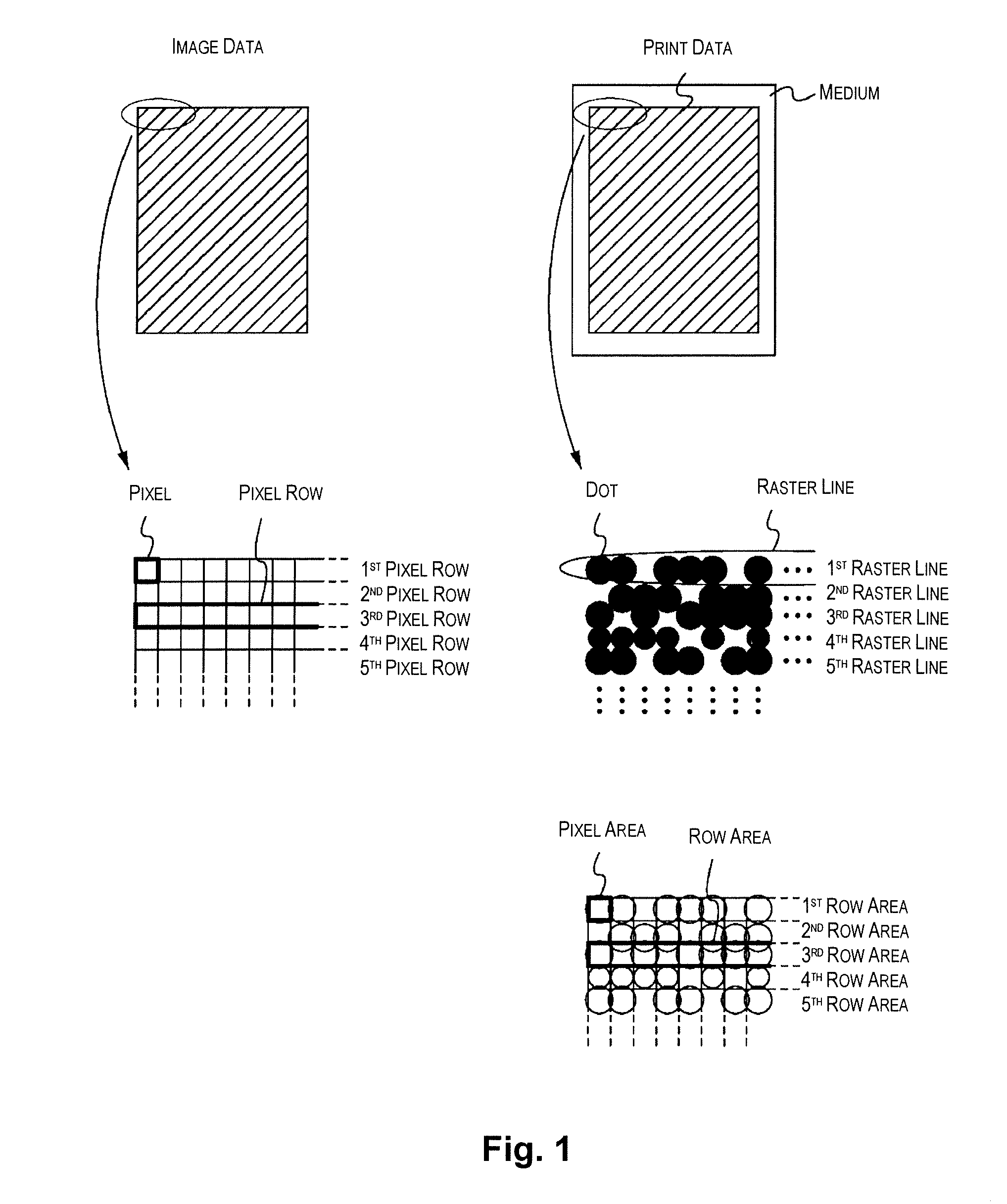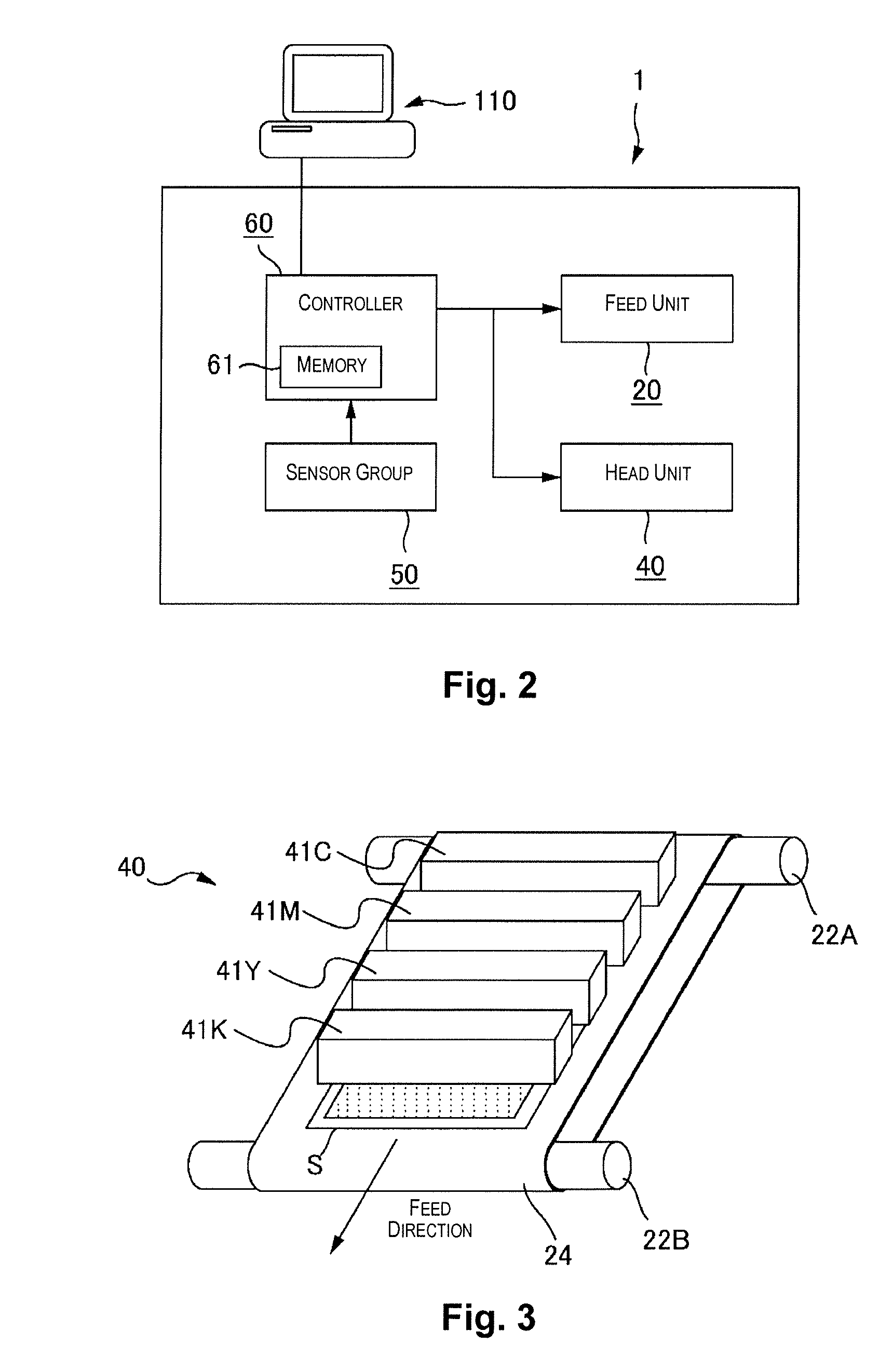Line printing device and method performing color conversion and halftoning on image data subjected to correction based on correction vectors associated with a pixel row and reference color
a printing device and color conversion technology, applied in the field of printing devices and printing methods, can solve the problems of mixing-color unevenness, streak-like density unevenness in printed images, and the inability to achieve uniformity, so as to reduce the unevenness of printed images
- Summary
- Abstract
- Description
- Claims
- Application Information
AI Technical Summary
Benefits of technology
Problems solved by technology
Method used
Image
Examples
first reference example
Normal Process of Printer Driver
[0071]A printer driver is installed on the computer 110 (FIG. 2). The computer 110 on which the printer driver has been installed functions as a print control device for controlling the printer 1. The printer driver receives image data (input image data) from an application program, converts this to print data of a format that can be rendered by the printer 1, and outputs the print data to the printer. During conversion of input image data to print data, the printer driver carries out processes such as a color conversion process and a halftoning process.
[0072]FIG. 6A is an illustration of a process of a printer driver in a first reference example. The first reference example is a process that does not involve correcting density unevenness.
[0073]Prior to the color conversion process, the image data is 256-tone RGB color space image data. If necessary, prior to the color conversion process, the printer driver carries out a resolution conversion process ...
second reference example
Single-Color Unevenness Correction Process
[0078]Where printing is carried out according to the normal process of the first reference example, in some instances streak-like density unevenness may occur in the printed image. This density unevenness is thought to be caused by failure of the multitude of dot rows that make up the printed image to be formed in ideal fashion due to the effects of manufacturing errors of the heads, so that individual dot rows are darker or lighter depending on dot size, or the dot rows are formed out of alignment.
[0079]Because the printed image is composed of superimposed images of the same color space as the ink colors, it is thought that if density unevenness of the individual colors (single-color unevenness) of the same color space as the ink colors is respectively suppressed, density unevenness in the printed image as a whole may be suppressed as well. According to this second reference example, density unevenness is respectively detected on an individ...
embodiment
Mixed Color Unevenness Correction Process Method of Acquiring Mixed-Color Unevenness Correction Values
[0120]First, the method of acquiring mixed-color unevenness correction values is described. The process of acquiring mixed-color unevenness correction values is carried out during the inspection process at the factory where the printer 1 is manufactured (however, acquisition of mixed-color unevenness correction values may also be carried out by the user who has purchased the printer 1).
[0121]FIG. 16 is a flow chart of the mixed-color unevenness correction value acquisition process. Circumstances up to the point that the printer 1 acquires mixed-color unevenness correction values are comparable to those in FIGS. 7A to 7C discussed previously.
[0122]Initially, the inspector connects the printer 1 being inspected to a computer 110 at the factory (see FIG. 7A). A scanner 150 is also connected to this computer 110. A printer driver, a scanner driver, and a correction value acquisition pro...
PUM
 Login to View More
Login to View More Abstract
Description
Claims
Application Information
 Login to View More
Login to View More - R&D
- Intellectual Property
- Life Sciences
- Materials
- Tech Scout
- Unparalleled Data Quality
- Higher Quality Content
- 60% Fewer Hallucinations
Browse by: Latest US Patents, China's latest patents, Technical Efficacy Thesaurus, Application Domain, Technology Topic, Popular Technical Reports.
© 2025 PatSnap. All rights reserved.Legal|Privacy policy|Modern Slavery Act Transparency Statement|Sitemap|About US| Contact US: help@patsnap.com



